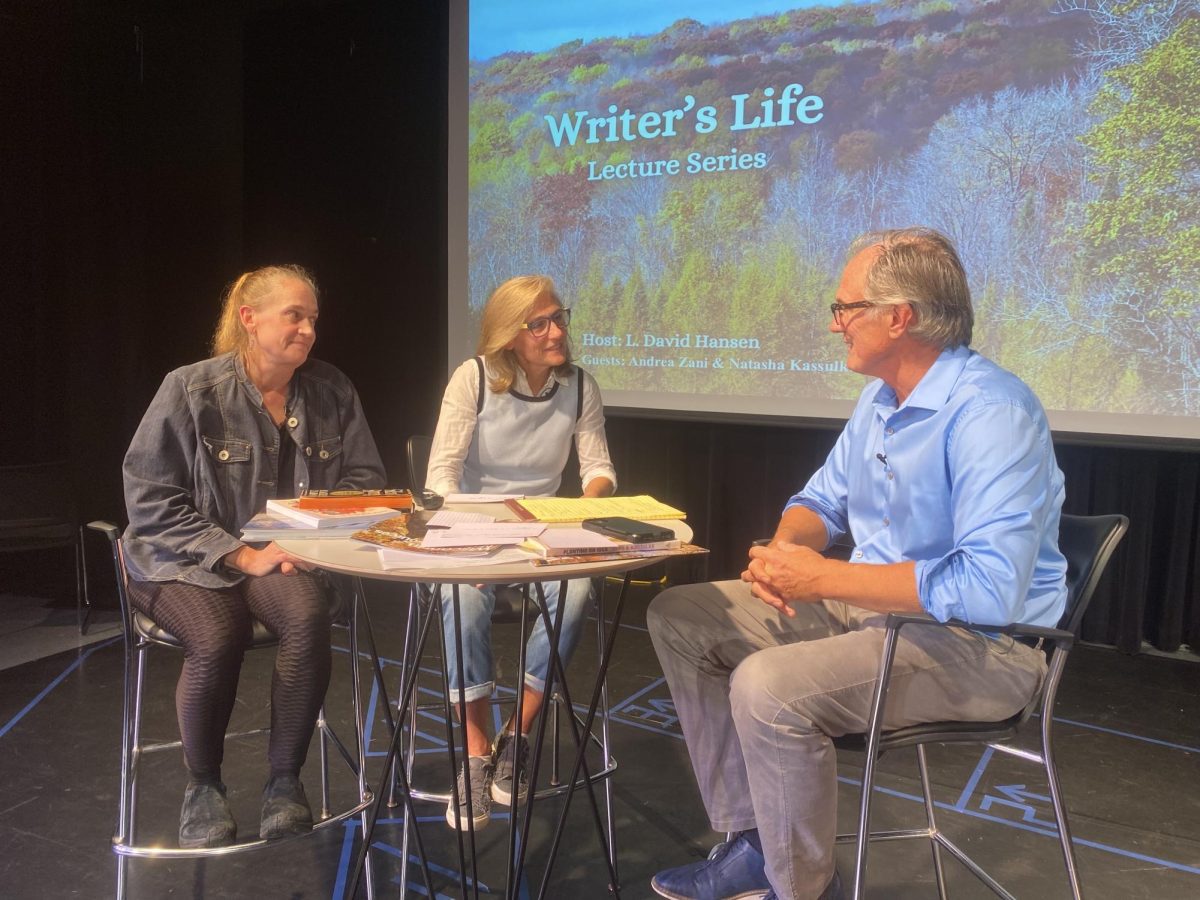Last week’s Writer’s Life Lecture Series featured Natasha Kassulke, journalism instructor and co-author of “Planting an Idea: Critical and Creative Thinking About Environmental Issues,” and Andrea Zani, managing editor of the Wisconsin Natural Resources magazine, where they both discussed the need for environmental journalism.
Moderated by journalism instructor and former environmental reporter L. David Hansen, both writers encouraged the audience to use their passion and skill sets to support the natural world.
On Earth Day last year, Natasha Kassulke published her first book, “Planting an Idea: Critical and Creative Thinking About Environmental Issues,” co-authored with Jerry Apps.
Seeing political polarization affect the world’s viewpoint on climate change, the two authors wrote the book to encourage others to use critical thinking to question and discover their role in combating climate change. Because global warming impacts everyone, the guidebook is a starting point for having difficult conversations with different points of view.
Kassulke grew up on a small farm, giving her a backyard of wildlife and nature. Participating in 4-H was an integral part of her environmental awareness. She soon learned that her accessibility significantly influenced how she approached environmental storytelling.
The book emphasizes critical thinking, using data and analysis to make one’s own judgment.
It also serves as a guidebook for people seeking to contribute to climate change solutions, but do not necesarily know how to go about it.
She encouraged observing natural weather phenomena like floods, winter changes, hurricanes, or other weather anomalies. By monitoring the weather, we can see the incremental changes contributing to global warming trends.
With an audience of writers and photographers, Kassulke invited them to consider different forms of environmental journalism. She said to look for opportunities to write, saying that one way to get a byline would be to write for the student newspaper, the Clarion.
Photography is also crucial.
Kassulke pointed out National Geographic photographer Joel Sartore as an example of someone who recognizes the affects of climate change. Sartore has made it his goal to photograph every endangered species. He hopes to get the public to care and save species from extinction by sharing and showcasing his photos.
Referring to Sartore’s photos of endangered species, Kassulke observed, “You know what bothers me? What about the ones that are gone that we didn’t even know existed?”
Andrea Zani is the managing editor of the Wisconsin Natural Resources magazine, a quarterly publication with a circulation of 90,000. Through nature writing, Zani believes in educating, engaging and entertaining readers.
Entertaining is a way to engage people who may want to avoid reading environmental stories. If a journalist approaches it as the information as enjoyable, the audience will be more inclined to read and learn more about climate.
The magazine shares important information, like wildlife management and native plants. It also profiles today’s environmental leaders, like the daughter of the Earth Day founder, Tia Nelson.
Zani believes a key factor for future journalists is to listen to people and hear their stories. She contextualizes those stories in important historical events, like the 50th anniversary of Earth Day.
“You can’t fix the future if you don’t remember the past,” Zani said.
Both writers emphasized that awareness begins by staying in the moment and paying attention to our surroundings.
By concentrating on the environment, relishing the outdoors, and staying in the moment, they say we have less chance to destroy it.
They believe that remaining present in the moment can generate ideas for environmental journalists. Bringing the conversation to an end, Kassulke encouraged the audience to think about their own story and what is the best way to tell it.
“We plant an idea. You go ahead and do something with it,” Kassulke said.


























